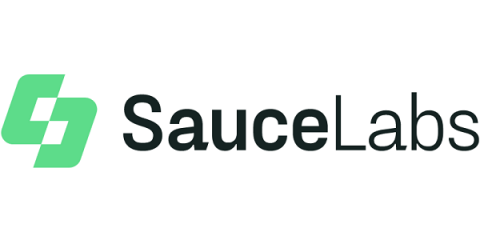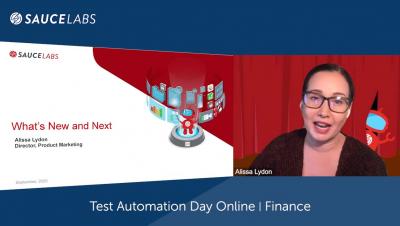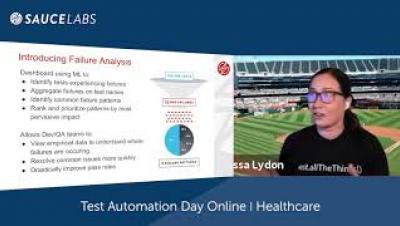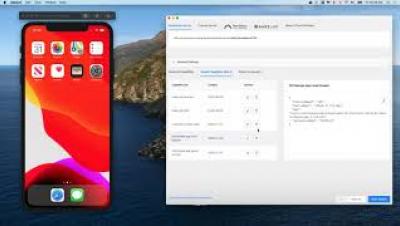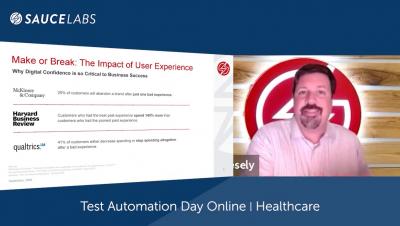Systems | Development | Analytics | API | Testing
October 2020
The Most Common Test Error and Why It Happens
How To Properly End Test Sessions
1 Simple Trick To Massively Improve Automation Efficiency
Automated UI testing is a daily struggle for efficiency and reliability. A single misconfigured line of code can cost teams in hours of lost feedback time and test error triaging—potentially costing companies hundreds of thousands of dollars. In this case study we will see how interactions with only two web elements led to a 34% degradation in the test execution time.
Speeding Up Your Tests: Short Tests in Parallel
In the first blog in this series, I talked about test speed, and why it shouldn’t be your first priority. Rather, you should focus on getting accurate test results back consistently. This week, I’ll discuss the power of parallelization in testing.
How to Introduce Test Automation Practice in a Legacy Financial Company
Hot Off the Press: What's New and Next at Sauce
In this session, Sauce Labs Director of Product Marketing Alissa Lydon shares how Sauce Labs is delivering on its 2020 product roadmap and introduces new features including Failure Analysis, Visual End-to-End Testing, and the Sauce Testrunner Toolkit (https://saucelabs.com/platform/sauce-testrunner-toolkit).
Parallelize Your JavaScript Tests In CI/CD
This spring, Sauce Labs announced the Sauce Testrunner Toolkit (beta) to expand developer-first capabilities and support for native JavaScript frameworks. The Testrunner Toolkit makes setting up, writing, and running web tests easier and faster for developers during early pipeline testing. First it supported Puppeteer, followed by Cypress, TestCafe, and Playwright to provide the flexibility to test the way you want, along with Sauce Labs insights, at scale.
Advanced Debugging Techniques in Sauce Labs | Nikolay Advolodkin
1st iOS test in Sauce Labs | Nikolay Advolodkin
Inspecting Safari HTML and Submitting a Form | Nikolay Advolodkin
How to Optimize a Test and Make It 560% Faster
Deep in the implementation of every automated UI test lives the potential to turn something simple into something slow and unreliable—simply by adding extra Selenium commands. The data clearly show that longer tests are less likely to pass. In this case study, I will show you how to optimize a test and make it 560% faster. We will do this by tackling inefficient use of Selenium commands.
What's Coming in Selenium 4: How Can I Contribute?
As the lead of the Selenium project, I wanted to kick off a new blog series leading up to the release of Selenium 4. During this series, I’ll talk all about how the Selenium project works, who is involved, how you—yes, you!—can get involved, and we’ll get a sneak peek at what’s new in Selenium 4. I've been speaking about this off and on for a while, but now the 4.0 release is looming I wanted to start sharing in more depth.
Hot Off the Press: What's New and Next at Sauce
In this session, Sauce Labs Director of Product Marketing Alissa Lydon shares how Sauce Labs is delivering on its 2020 product roadmap and introduces new features including Failure Analysis, Visual End-to-End Testing, and the Sauce Testrunner Toolkit (https://saucelabs.com/platform/sauce-testrunner-toolkit).
Functional vs. Data Testing: Don't Own Your Clients' Data
How to Get Started with Appium Desktop | Nikolay Advolodkin
How to Do Real Device Testing on Sauce Labs | Nikolay Advolodkin
Mobile Automation Best Practices | Nikolay Advolodkin
Welcome to Test Automation Day | Healthcare
To kick off Test Automation Day Online | Healthcare, Ryan Vesely, VP of Customer Success and Technical Services at Sauce Labs, provides an introduction to Sauce Labs and our commitment to creating a world of digital confidence (https://saucelabs.com/digital-confidence).
Best Practices for Shifting Accessibility Testing Left
QA professionals, testers, and developers are constantly learning new tools, tech stacks, and development practices. When they’re told they have to learn accessibility, it can often feel like an unwelcome and overwhelming disruption, slowing them down and forcing them to test and rewrite what they thought was perfectly good code. The good news is accessibility tools are more tester-friendly than ever.





